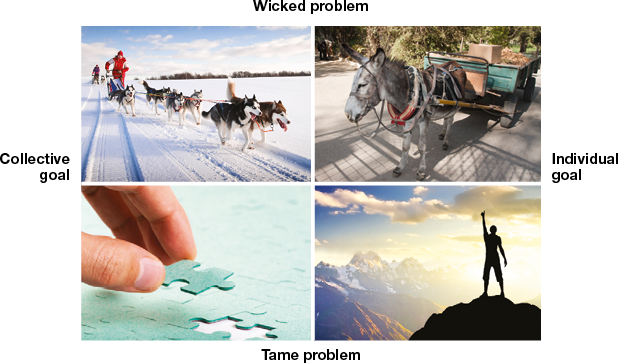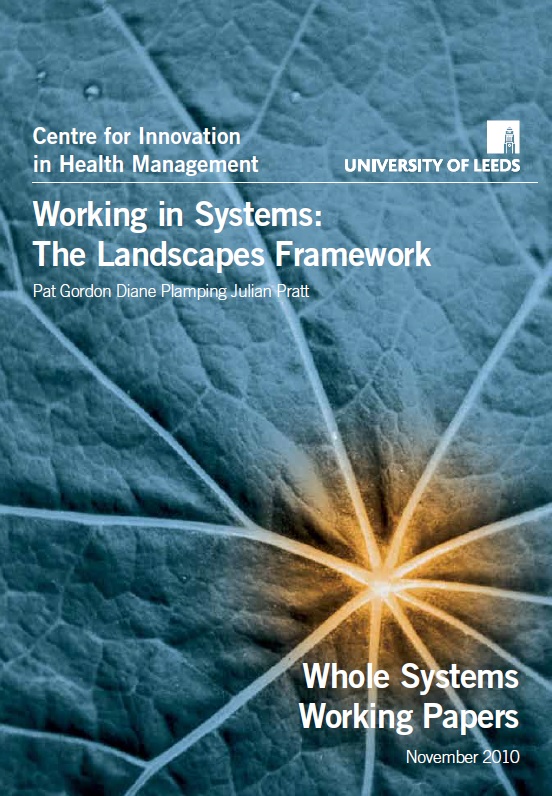Change Selection
01
Please choose a question

THE LANDSCAPES FRAMEWORK
CIMH
The Landscapes Framework suggests that different problems need to be treated
differently. How ‘the animateur’ views the nature of the problem defines both
‘the landscape’ of the problem and also how it is treated. Problems may not fit
wholly into one landscape and in addition the animateur has the ability to shift
the focus of attention, so that the landscape itself shifts and thus the approach
too can change.
Types of systems
The Framework thinks about systems in terms of them being both ‘Adaptive’ and ‘Designed’.
Systems have different elements of each at play at different times.
Adaptive systems: A complex, self-organising eco-system that adapts to change
over time. Change here is best achieved through agitation from within.
Designed systems: A system that is machine like, with roles and functions that
are controlled. Change here is usually imposed from the outside.
The Problems
Tame problems: Familiar land, known problems with known solutions. There is
general consensus about what to do.
Wicked problems: Outside the familiar, solutions are unknown. Conflicting views
about the way forwards.
The Landscape
What do the landscapes look like and feel like? What approach is needed?

Mountains: A competitive landscape of tame problems. Marked by individual
goals and approached from the designed systems perspective, with clear goals
and rules that encourage competition.
Jigsaws: A tame problems landscape with collective goals that needs cooperation
from individual elements. The problems are best approached from the designed
system perspective, with clear steps.
Donkeys: A wicked problems landscape that is dependent on individuals
achieving their goals. But, it also demands co-operation with others to work
towards a shared goal. This landscape needs to be approached from the adaptive
systems perspective, with shared learning and adaptation being core features.
The ice field: A wicked problems landscape that has collective goals. This
landscape demands mutual support across the system. Goals are vague and the
way forwards unclear and confusing. It is marked by uncertainty, complexity and
continuously, shifting change. This means that problems need to be approached
from the adaptive systems perspective, allowing the system to adapt as it goes along.
Further Resources
Released in 2010, the Centre for Innovation in Health Management‘s paper ‘Working in Systems: The Landscapes Framework’ is downloadable here.

